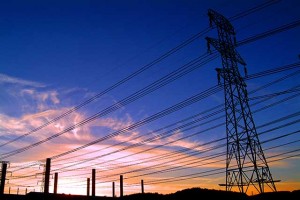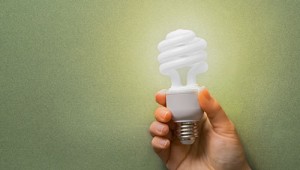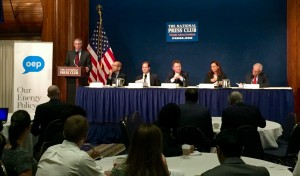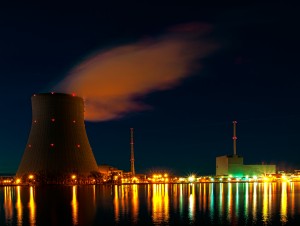587 item(s) were returned.
Renew and Sustain is a firm dedicated to helping people and organizations navigate the path to sustainability. We work with clients to explore and identify opportunities to implement best practices, achieve goals, and increase profits. While sustainability is not a game, we are here to be your coach. We collaborate with our partners and clients to create winning strategies for them, their communities, and the environment.
View InsightLead Communications Consultant
Duke Energy
Industry experts recently testified before Congress that more needs to be done to protect the nation’s electric grid from natural disasters, cyberattacks, physical threats and planned sabotage. Recent news stories have highlighted grid security issues, including analysis by USA Today that claims the U.S. Department of Energy’s computer systems were compromised more than 150 times between 2010-2014. And while cybersecurity is a persistent threat, physical damage to “critical infrastructure” facilities from severe storms, flooding, wildfires, and even shootings, has the potential for extensive, long-duration outages: Critical high-voltage substations, while representing only 3% of all substations, carry the bulk of the… [more]
View InsightExecutive Director
Energy Storage Association
It’s been two months since the Environmental Protection Agency (EPA) released the Final Rule for the Clean Power Plan (CPP). Even if you haven’t read all 1560 pages yet, you probably know the gist of it by now. At its core, the CPP identifies three building blocks in setting the goal for each state: (1) lowered heat rates at coal-fired steam plants, (2) increased utilization of existing natural gas combined cycle plants, and (3) increased deployment of utility-scale non-emitting renewables. Most notably, energy efficiency (EE) is missing from that list, which is a change from the 2014 proposal. However, while… [more]
View InsightCrude oil prices have dominated headlines and industry attention over the past year. In 2014 and continuing in 2015, the Organization of the Petroleum Exporting Countries (OPEC) agreed to unconstrained output for it 12 member countries, resulting in a dramatic increase in global oil supply. Meanwhile, China and Europe’s demand for oil has remained relatively steady. In addition, U.S. domestic production nearly doubled since 2008, decreasing domestic imports and leaving more oil on the global market. As a result, oil prices fell from $90 per barrel in 2014 to $46 per barrel today and projections indicate prices between $30 and $60 per barrel… [more]
View InsightPolicy Associate
EESI
Although the administration’s finalized Clean Power Plan was released in early August, EPA is still actively grappling with the rules regarding biomass feedstocks as a compliance option under the Plan. Biomass (or biogenic) feedstocks include wastes such as organic wastes, lumber, pulp and paper industry wastes, agricultural residues and purpose-grown feedstocks. Solid biomass can be co-fired with coal in existing plants or used in renewable heating applications. The biomass industry argues that the utilization of biomass as an electricity source is an attractive option for states as it has the potential to sequester carbon as additional feedstocks are grown, it… [more]
View InsightOn September 16th, 2015, OurEnergyPolicy.org (OEP) hosted a panel event moderated by Mark Drajem of Bloomberg News on the EPA’s ozone rule and the energy sector at the National Press Club in Washington, DC. EPA is expected to announce a new standard for ground-level ozone, a smog-forming pollutant. Most believe they will reduce the existing standard from 75 parts per billion (ppb) to 65 or 70 ppb by 2025. According to EPA, this would prevent 4,200 premature deaths, between 1,400 and 4,300 asthma-related emergency room visits, and between 320,000 and 960,000 annual asthma attacks in children. The very spirited discussion… [more]
View InsightJ.C. Ward Jr. Professor of Nuclear Energy Engineering
Cornell University
“Sustainable future” advocates seem to believe that solar, wind and hydro-electricity will eventually make up close to 100% of our energy generation, but there are benefits to having “central station” power plants in addition to distributed power generation. If the goal is to reduce greenhouse gas (GHG) emissions while assuring the health of our economy, the most viable way of generating central station power at present is nuclear fission. Central station power complements distributive power generation in two important ways. Central station power plants are better able produce power on a small area relatively close to where the energy will… [more]
View InsightEditor
Bloomberg's First Word Energy
After years of discussion and delay, the Environmental Protection Agency (EPA) is set to finalize ozone standards in the coming weeks. It’s a rule long in the making: EPA’s decision during the Bush administration to set the standard at 75 parts per billion was challenged in court by health and environmental organizations as insufficient. At the beginning of the Obama administration, the EPA said it would reconsider the standard, but that initiative was tossed out by President Obama in the lead up to 2012 election. The move summed up the discord between the president and environmentalists in his first term.… [more]
View InsightNASA has used thermoelectric energy, or the conversion of waste heat to electricity, for decades to power spacecraft and the Mars Science Laboratory Rover. However, thermoelectric energy has attracted minimal attention in the alternative-energy world due to its limited commercial viability, until recently. Last year, Michigan State University (MSU) with the support of the Lawrence Berkley National Lab developed a new class of thermoelectrics using a compound called tetrahedrite that is believed to be more cost-effective and has the potential for everyday use. One start-up finding success building on the findings from MSU is Alphabet Energy. They have developed a stand-alone… [more]
View InsightThe Fuse (www.energyfuse.org) is a trusted online resource that presents timely written analysis, visual data, infographics, interviews, videos, and other content on a wide range of issues related to oil markets, alternative fuel vehicles, domestic energy policy and national security.
View Insight






